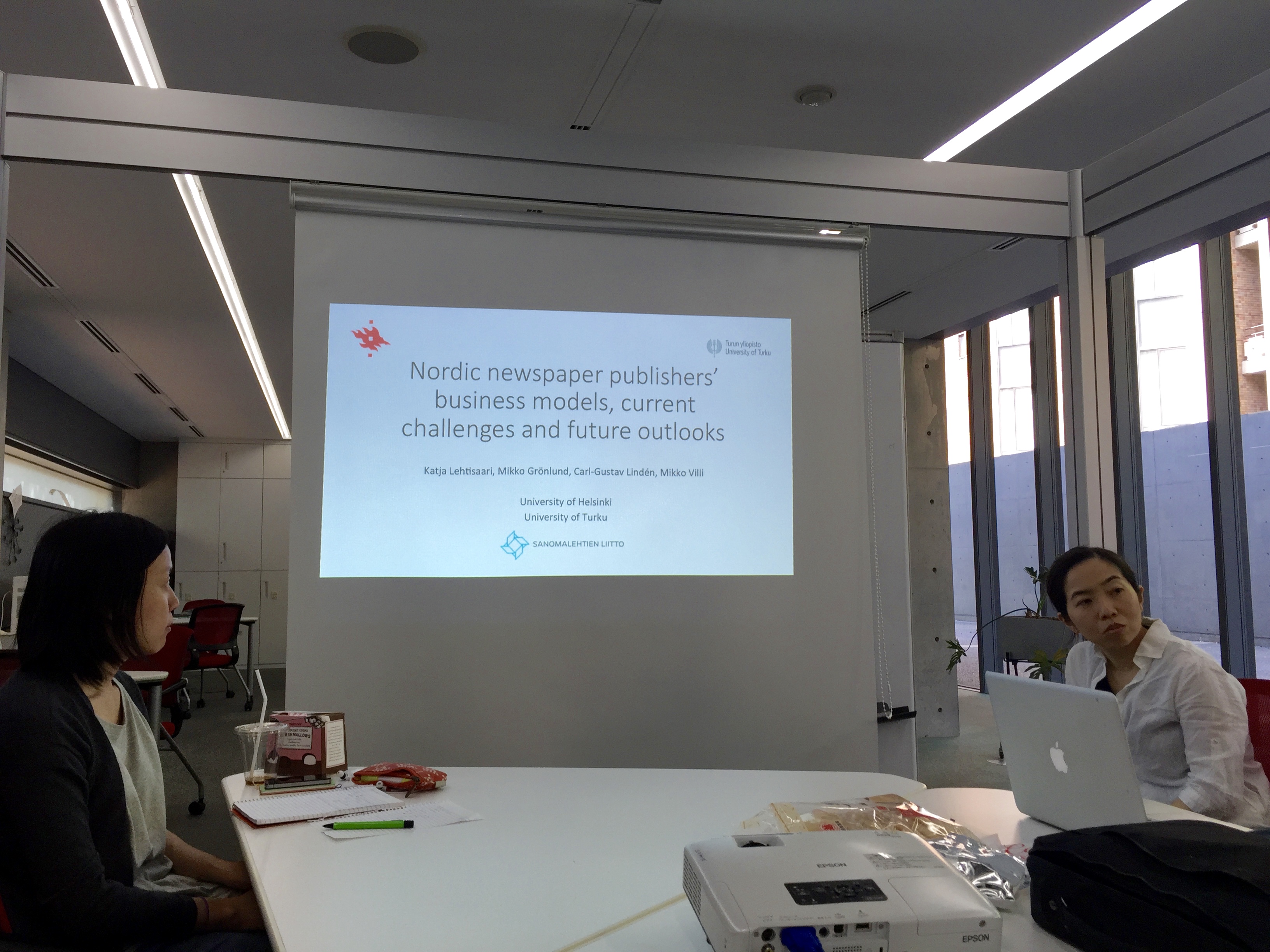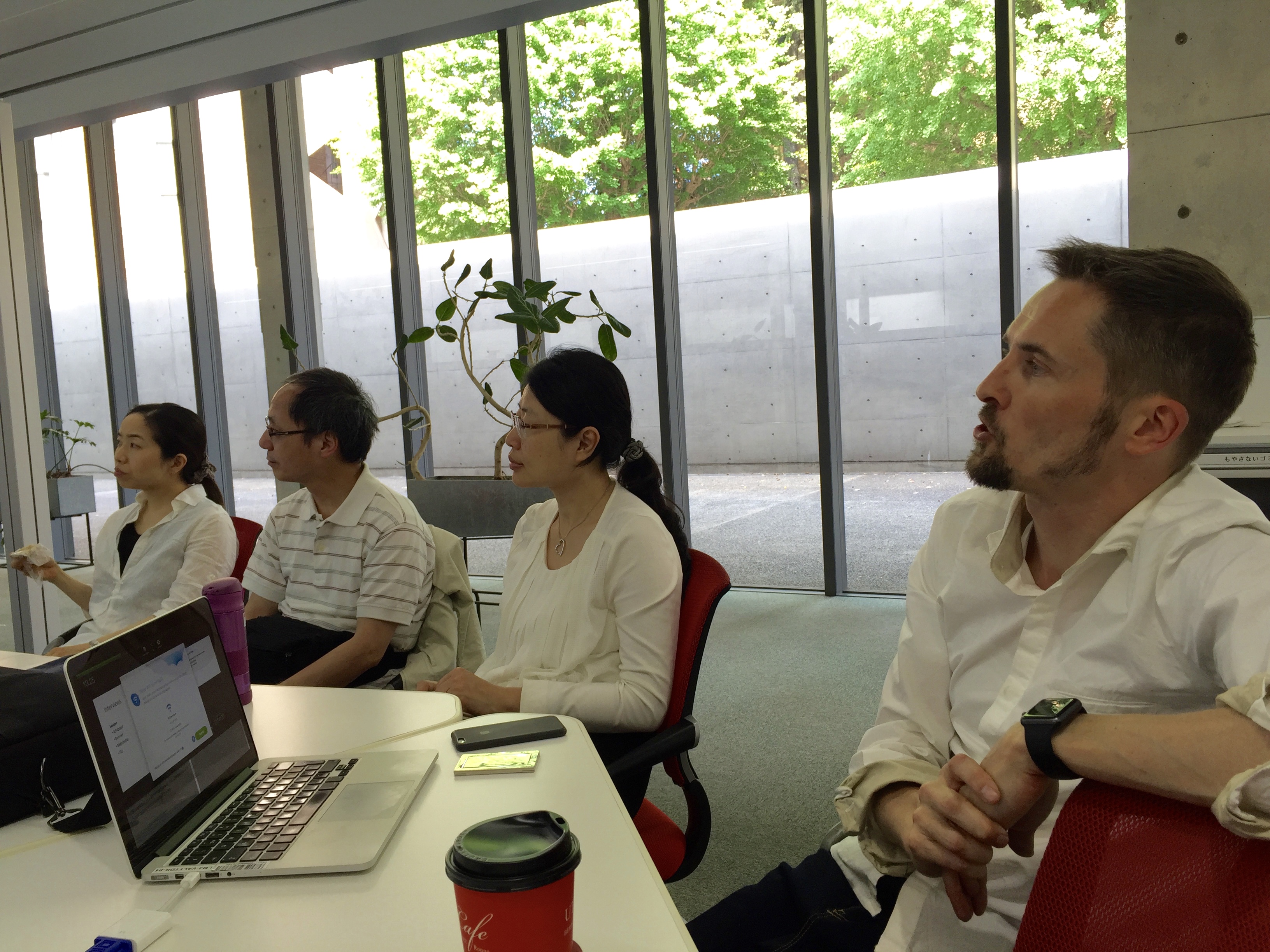As more people read the news on digital platforms, the newspaper industry is facing many challenges to survive. In his presentation at the Biotope Salon on May 19, Mikko Villi, Professor of Journalism at the Department of Communication at the University of Jyväskylä, showed how the newspaper businesses in Scandinavian countries are dealing with the rapid changes surrounding them.
 Under the title “Nordic newspaper publishers’ business models, current challenges and future outlooks,” Professor Villi introduced a joint research project he and his colleagues at the Univ. of Helsinki and the Univ. of Turku performed in 2016 which studied newspaper companies in Norway, Sweden and Denmark.
Under the title “Nordic newspaper publishers’ business models, current challenges and future outlooks,” Professor Villi introduced a joint research project he and his colleagues at the Univ. of Helsinki and the Univ. of Turku performed in 2016 which studied newspaper companies in Norway, Sweden and Denmark.
The first part of the report gave an overview of the industry of the three countries between 2005 and 2014.
- In Norway and Sweden, both had over 70 newspapers published 4 to 7 times a week, while weekly free sheets are dominant in Denmark.
- Newspapers in all three countries saw a significant drop in circulation in that decade: Norwegian newspapers saw a 23 percent decline, while its Swedish and Danish counterparts saw a 30 percent and 35 percent drop respectively.
- This downward trend was also reflected in the decline of advertisement revenue for newspapers: In 2005, Norwegian newspapers held 43 percent of the entire advertising market, but the share dropped to 27 percent in 2014. Similarly, ad revenue for newspapers fell from 45 percent to 21 percent in Sweden, while this dropped from 47 percent to 24 percent in Denmark.
- Meanwhile, online advertising saw a sharp rise. In Norway, online ad revenue made up only 14 percent in 2006, but this jumped to 38 percent in 2014. In a similar manner, Swedish online advertising rose from 15 percent to 43 percent, while Danish online ad shares grew from 14 percent to 44 percent in the same period.
The second part of Professor Villi’s report showed a more detailed situation of the three markets, which was based on interviews with the newspapers of each country. Here are the excerpts:
- The general trend in Sweden was that although print income was still significant, digital income was growing fast. Newspapers agree that obtaining consumer data is becoming increasingly important for developing online content and performing targeted advertising, and they are coming up with ways to get readers to become registered users. Some have also noted the need to focus on paying readers in order not to rely as much or at all on ad revenue in the future. Meanwhile, some papers have also experimented with “robot journalism”, where articles are automatically written and do not require human intervention.
- As Norway is not a member of the European Union, neither the print nor the digital editions have to have VAT imposed, which makes the subscription prices cheaper for consumers. Norwegian newspapers are the most innovative among the three countries and they are experimenting with different new business models. For example, Schibsted is building its own data and service platform to fight against Google and Facebook, while others such as Aller are in cooperation with the two social network services. Meanwhile some local newspapers have also joined forces by networking digitally.
- Denmark, where freesheets have strong support from consumers, many commercial newspapers are still financially stable as they are backed by foundations. But being foundation-based means they lack flexibility, making it difficult to experiment with new businesses outside journalism. In order to stop the decline in subscription, some have run aggressive marketing and sales campaigns, while others have held exclusive events with readers to build a community with readers. Some have combined the digital subscription with a mobile phone subscription. They have recognized that consumers are, after all, willing to pay for online media content.

From the multinational survey, the study concluded that the newspapers are testing many new businesses such as providing personalized content while being flexible with the pricing, and creating joint digital platforms with competitors. However, no one has yet to come up with a strong answer. Many of the interviewees admitted that a new business model was necessary, as subscription and ad revenue will not be sufficient to maintain a viable business. They are also seeking for ways to obtain younger readers.
During the discussion after the presentation, participants acknowledged that the challenges facing Nordic newspapers were very similar to what Japanese newspaper industry and those in other countries are facing. The fact that no one has a good solution yet is also mutual. As one interviewee of the research noted, providing a strong journalistic material such as investigative reporting may be a key to survival, although that alone will not help generate income or win readers. We would like to see the same research performed a few years later to see whether or how things may change.
Setsuko Kamiya: Master Course Student of iii